From weekly sysadmin: unpack NetApp FAS 9000
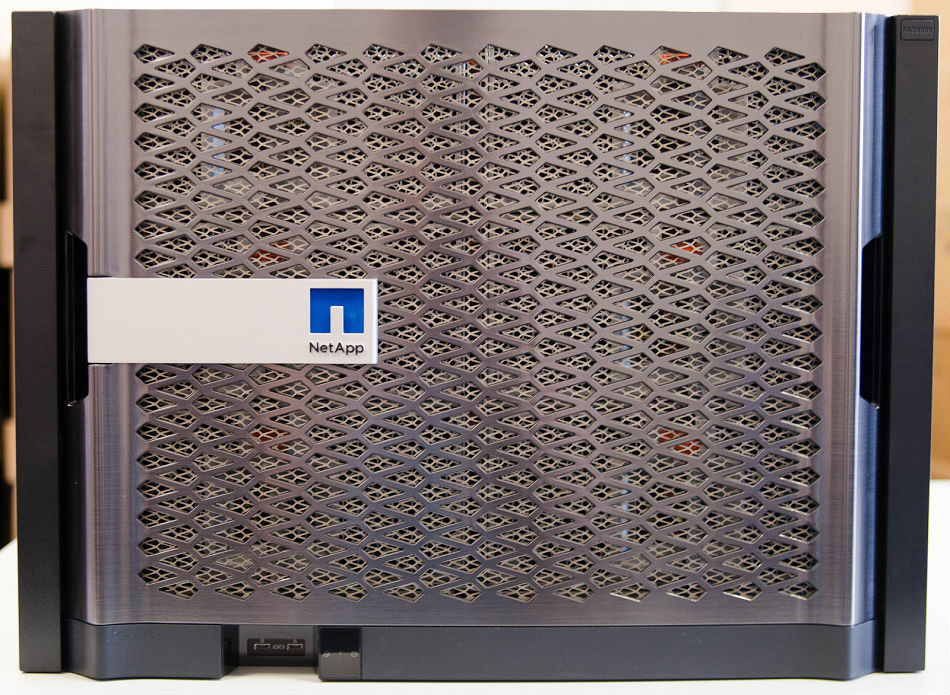
One of the media companies with which Onlanta cooperates, including in the framework of the tasks of designing and maintaining a private cloud, has attended to placing its HD video on a new storage system. As the storage system, the model of the line of modular hybrid flash systems from NetApp - FAS 9000 was chosen.
This is one of the first NetApp FAS 9000 systems delivered to Russia, so we think that you will be interested in our photo review and brief comments on the process of unpacking the system and installing it in the data center.
')
I emphasize - this is exactly the “photo review” of the new system from NetAPP, which few people saw and held in their hands. Our task was to unpack, install the system in the data center, turn it on and transfer it to the customer. Testing the system was not in our plans.
The FAS 9000 model replaced the previous generation of the 8060 and 8080 EX arrays.
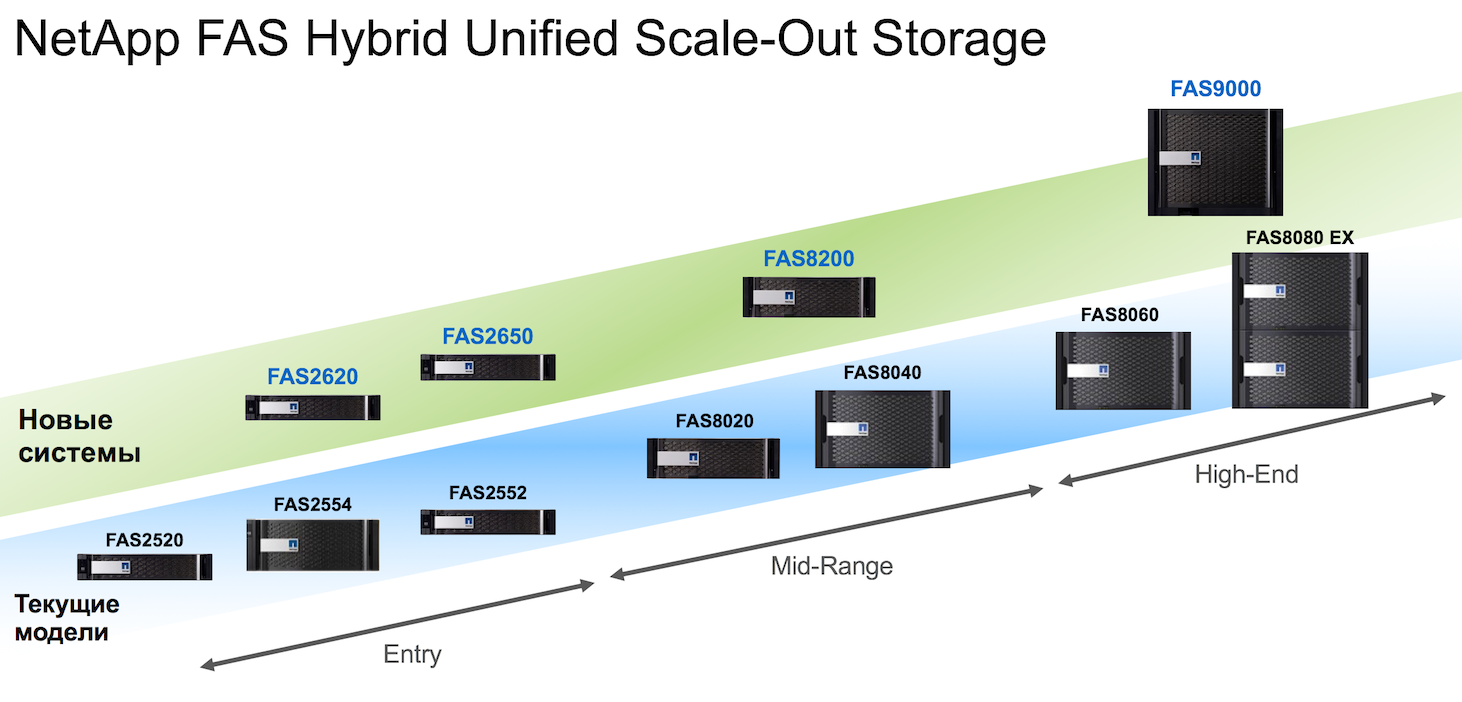
NetApp FAS Hybrid Scalable Storage
A source
New systems have become more productive, having received new Intel Broadwell processors (2 processors with 18 cores per controller), more memory (512GB per controller) and NVRAM (32GB per controller, NVRAM mirroring at 80Gb / sec). In addition to the already known and popular 10GbE / 16Gb FC UTA2 ports, 40GbE and 32Gb FC ports can be distinguished from the new connectivity options, and the SAS-3 12Gb interface has been used to connect disk shelves. For this model, the array chassis has been completely redesigned. The modular approach has fundamentally changed and improved the system. Controllers have lost ports (except console), and expansion modules are connected independently of each other and can support hot swapping in the future. This configuration makes replacing any of the chassis components a simple task that does not require switching the cables of the ports used in the system.
A modular approach may in the future provide the possibility of replacing controllers with newer and more productive ones.
Our system is not in the “richest” configuration, but it has 8 UTA2 10GbE / 16Gb FC ports on board, 4 40GbE ports for cluster interconnect, “non-removable” 2 TB NVMe Flash Cache (you can put up to 16 TB Flash Cache in the system) and 8 SAS-3 ports of 12 Gb. 9 DS4246 shelves with 4 TB NL-SAS disks will be used as the disk subsystem.
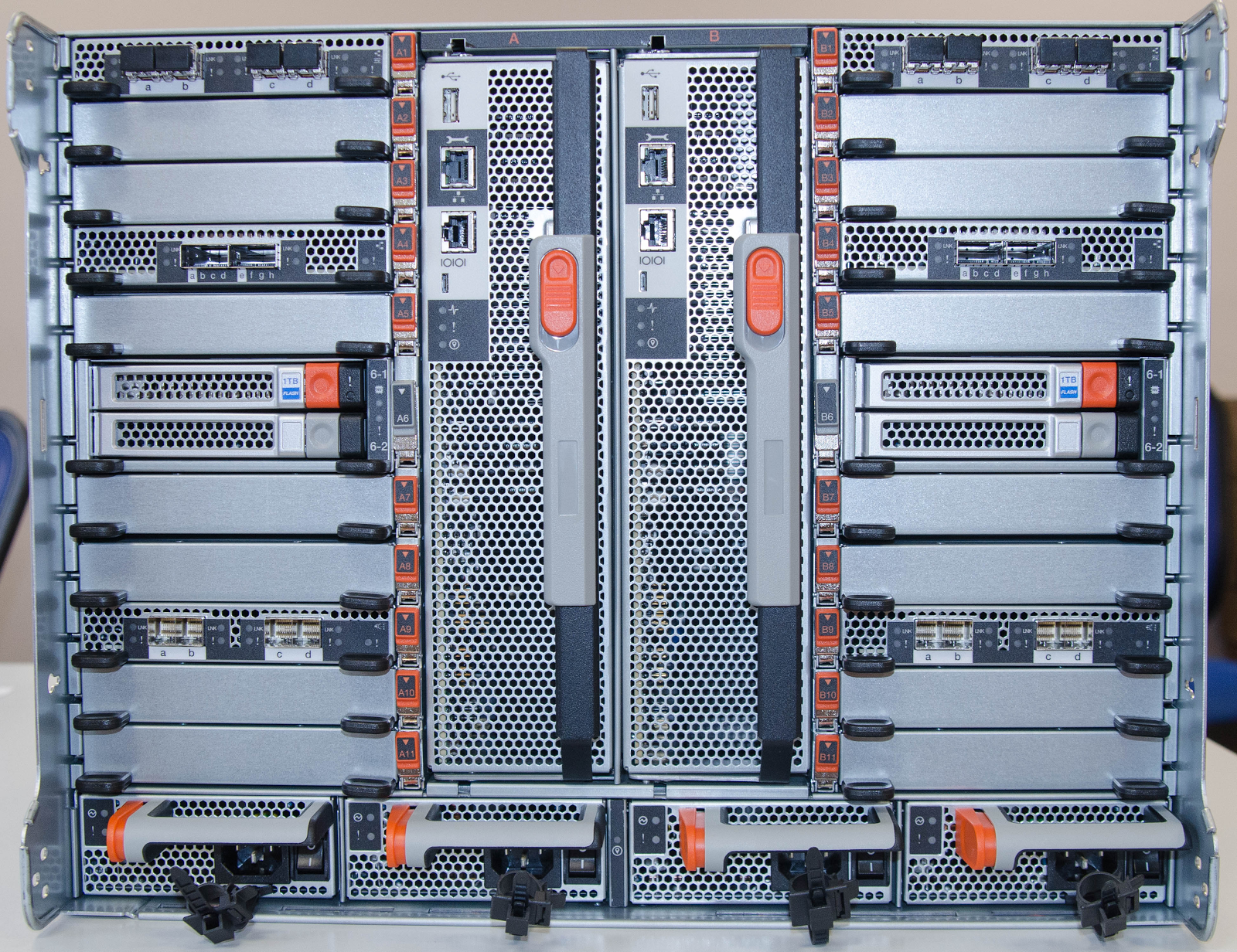
In the center we have two controllers. On the left and on the right there are 10 I / O modules, and below - 4 power supplies with a power of 1600W. The weight of the chassis with two controllers is almost 110 (!) Kg. Take this into account when planning a rack.

The front end is fully dedicated to the cooling modules and 2 NVRAM slots.

And at the very bottom is the console port (in addition to the individual ports on each of the controllers).
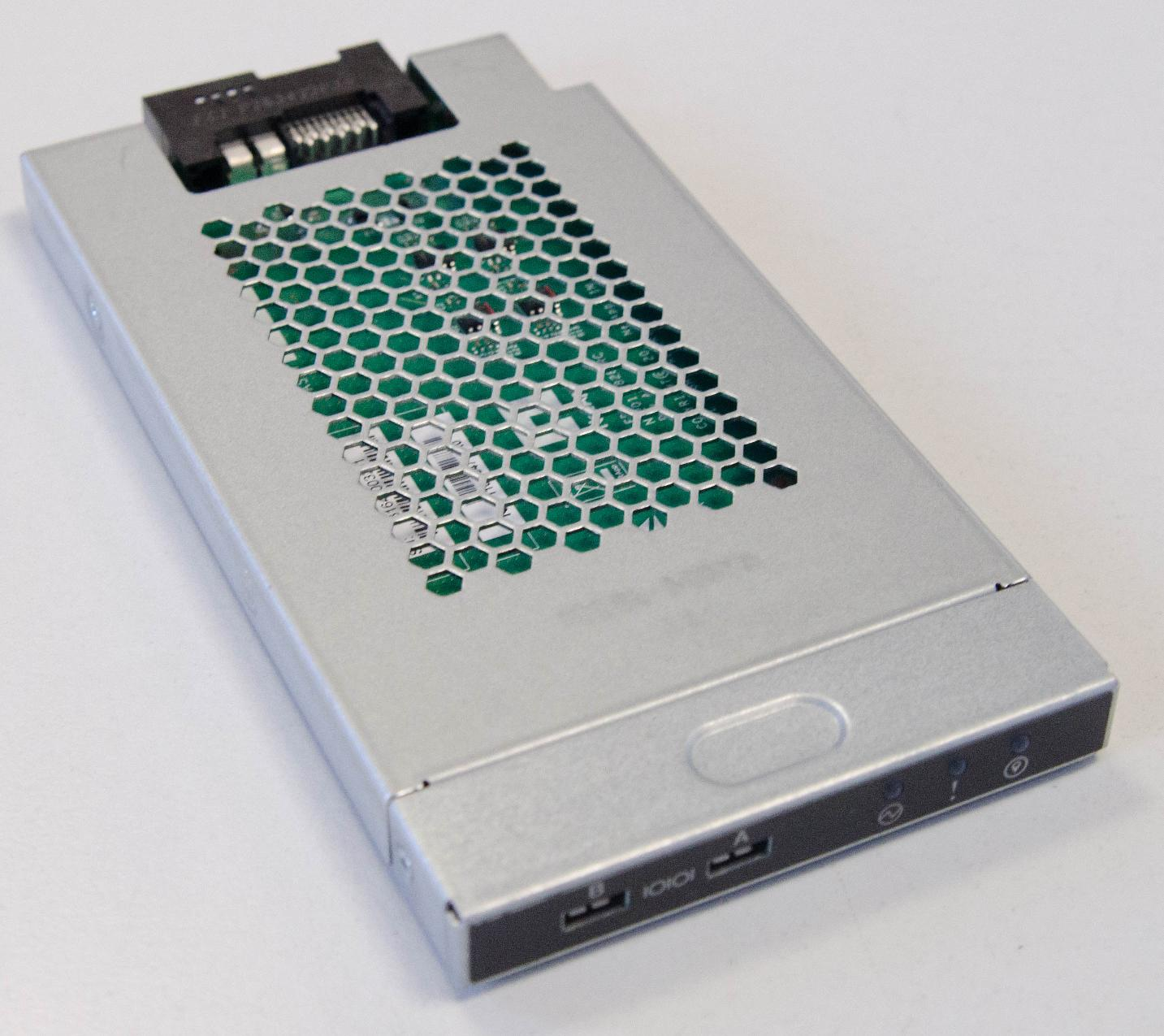
Consider the controllers more carefully.
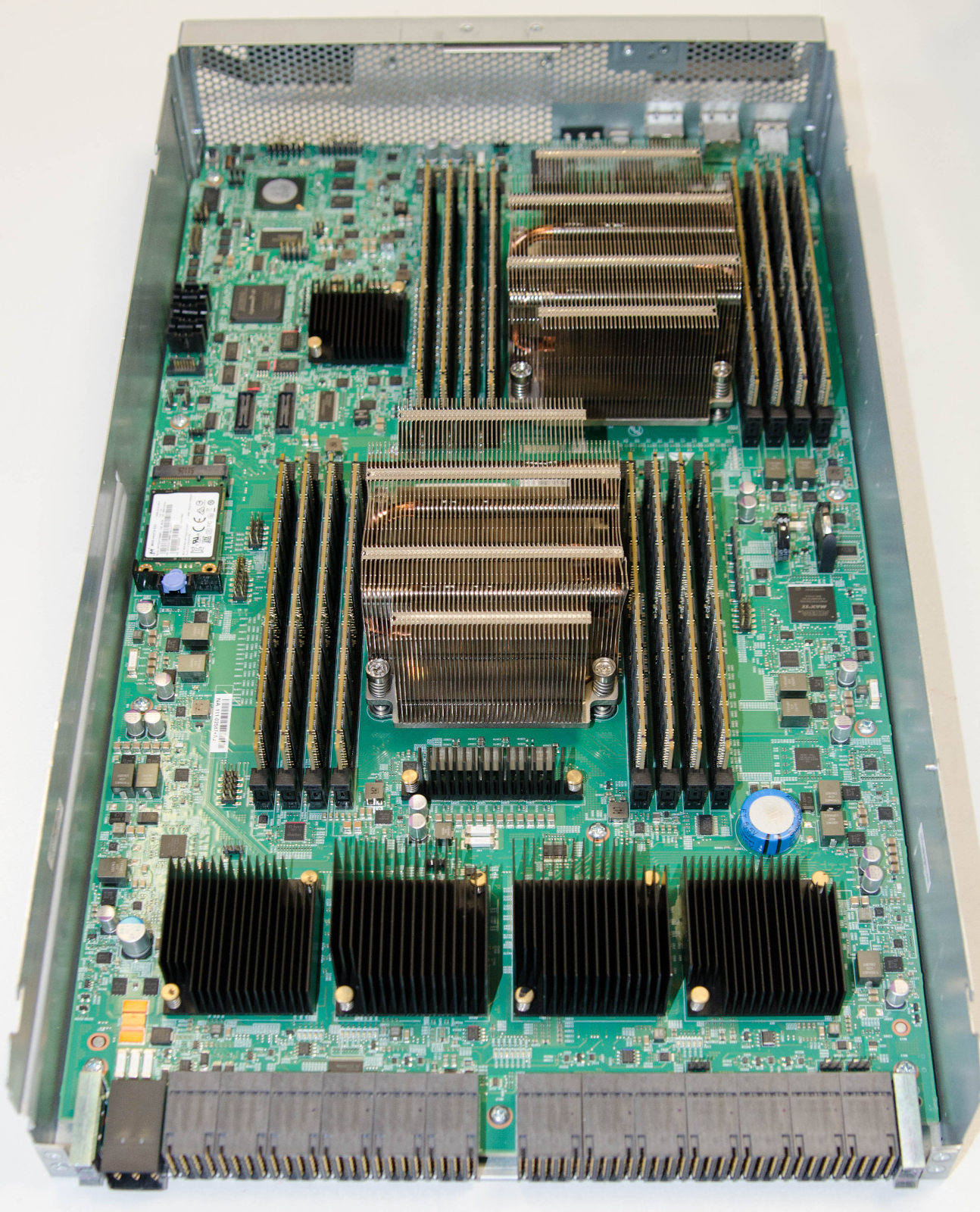
2 processors and 8 RDIMM ECC memory slots with a capacity of 32Gb for each of them. On the left side you can see the bootable flash-module in the format mSATA. Due to the fact that there are no more client ports on the controller, there are no PCIe expansion slots, they were brought to the chassis level.
Now let's take a closer look at the expansion modules. For convenience and for forgetful engineers, each module is signed by the name of the slot in which it is installed.
Four-port UTA2 10GbE / 16Gb FC

Dual port 40Gb for cluster interconnect

Four port SAS-3 12Gb

And this is how it looks after installation in the rack.


In conclusion.
The capabilities of this system are impressive: 2 FAS9000 controllers can support up to 80 (!) Shelves or up to 1440 disks. With new 10 TB drives, this allows for up to 14.4 PB of raw volume. And if you consider that the entire line of NetApp FAS arrays (and FAS9000 including) allows you to combine up to 24 controllers into a single cluster, the system volume of more than 170 PB will satisfy the most demanding customer.
Such systems are aimed primarily at such areas as high-performance computing, medicine, scientific research, geology, oil and gas production, television and video processing.
Source: https://habr.com/ru/post/326958/
All Articles